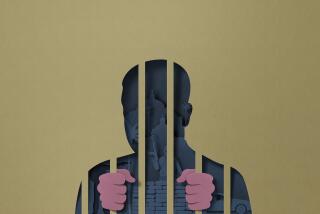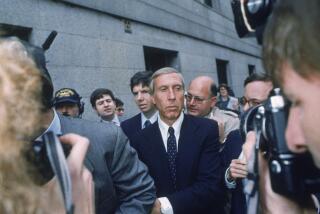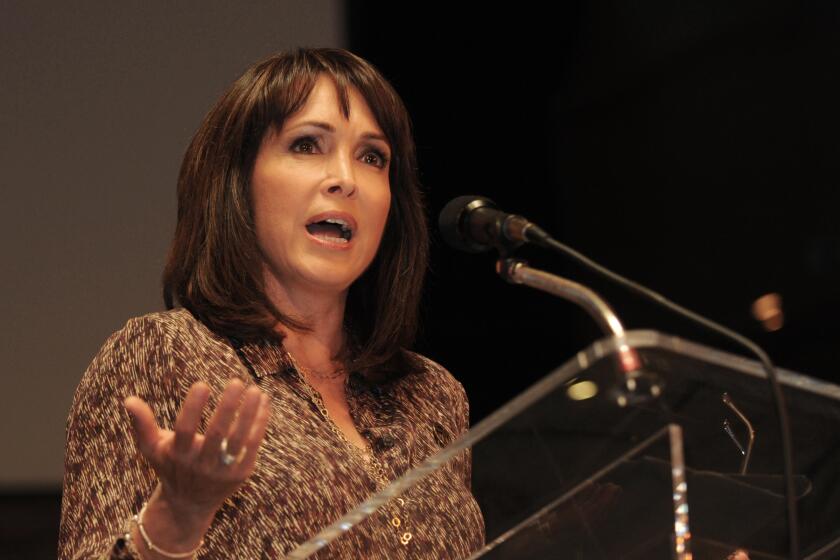Sidney Korshak, Alleged Mafia Liaison to Hollywood, Dies at 88
- Share via
Lawyer Sidney R. Korshak, who climbed from the westside ghetto of Chicago to the glitter of Hollywood as a shadowy advisor to big business, show business and organized crime figures, died Saturday in his Beverly Hills home of a heart attack at 88.
“He had a tremendous amount of power, and he understood the power of anonymity,” his cousin, Leslie Korshak, said from her Northern California home. “He wore power the way the average guy wears a sweatsuit.”
Korshak was a dapper power broker who for nearly 60 years did business and played with politicians, actors, corporate executives, union leaders and mobsters. Retired FBI Agent William R. Roemer, who tracked Korshak for three decades, described him in an interview as “the primary link between big business and organized crime.”
The legends about his life were as vast as his connections--and neither was absolutely verifiable.
Producer Robert Evans wrote in his memoirs that at 21, Korshak was “one of Al Capone’s top consiglieres.” He acquired a reputation for conducting all his business orally and always keeping a large supply of coins on hand to make calls from pay telephones that were less likely to be tapped.
He had his own table at Le Bistro, a Beverly Hills restaurant in which he owned a share, and he regularly held lunchtime court there. He numbered among his prominent Hollywood friends longtime MCA Chairman Lew Wasserman, who once said he did not believe the allegations that Korshak had links to the underworld. Wasserman in 1976 described Korshak as “a very good personal friend . . . a well-respected lawyer, a man of his word and good company.”
Korshak was investigated by federal agents for years and was the subject of numerous FBI reports. But he was never indicted. He was arrested only once--for carrying a concealed weapon in Chicago in 1931, a charge that was dropped at his arraignment.
Still, he paid thousands in civil penalties to the Internal Revenue Service and once entered into a consent decree with the Securities and Exchange Commission, stemming from stock fraud allegations.
“His life was one of living in a minefield and never stepping on anything,” said G. Robert Blakey, a Notre Dame University law professor who was an organized crime prosecutor in the Justice Department under Atty. Gen. Robert F. Kennedy.
Korshak first represented clients in Hollywood in the 1930s. His friends included Kirk Douglas, Robert Evans, David Janssen, Harry Karl, George Raft, Ronald Reagan, Debbie Reynolds, Jill St. John, Dinah Shore, Frank Sinatra and Wasserman. Joyce Haber, the late Hollywood columnist, once wrote, “If you’re not invited to his Christmas party, it’s a disaster.”
In his 1994 memoir, “The Kid Stays in the Picture,” producer Evans described Korshak as his longtime consigliere who helped him resolve many problems--including persuading MGM executives to release Al Pacino from a contract so that he could play Michael Corleone in “The Godfather.”
Korshak took care of the problem with one phone call to MGM’s principal owner, Kirk Kerkorian, according to Evans’ book. He simply told cash-short Kerkorian that if he wanted to get the money he needed to build a hotel in Las Vegas--financing that Korshak could arrange or block--then he had to tell his subordinates at MGM that they had to free Pacino from his contract. They complied.
Evans wrote that Korshak was not a mobster. But his description of the man contributed to Korshak’s air of mystery:
“He was known as the Myth, from the Racquet Club to the ‘21’ Club in New York. . . . What did he do? He was a lawyer living in California without an office. Who were his clients? Well, let’s just say a nod from Korshak and the Teamsters change management. A nod from Korshak, and Santa Anita closes. A nod from Korshak, and Madison Square Garden stays open. A nod from Korshak, and Vegas shuts down. A nod from Korshak, and the Dodgers suddenly can play night baseball.”
As time went on, Korshak graduated to clients that included several Fortune 500 companies, as well as numerous Hollywood figures. The companies included Hilton Hotels, MGM Hotels, Paramount Pictures, Max Factor and General Dynamics.
But Korshak always had an aura of intrigue about him, and some say that he traded on the myth that he had the ties to get things done. Korshak was considered a master “fixer” by Roemer and numerous other federal lawmen. To some, this meant that Korshak was called in to settle problems that seemed intractable--particularly labor relations disputes between unions and large corporations. (He played an instrumental role in settling a major dispute between the fledgling United Farm Workers Union and Schenley Industries in the mid-1960s.)
Veteran Korshak-watchers cite his activities as a board member of the Loyola Medical School in Chicago as an example of his adroitness. In November 1964, Korshak financed a fund-raising dinner for the school at Chicago’s Conrad Hilton Hotel at which the guest of honor was FBI Director J. Edgar Hoover. Korshak and the nation’s top G-man were seated at the same table, despite the fact that Hoover’s own agents had been gathering evidence on Korshak’s activities on secret wiretaps for seven years.
Korshak was a very influential figure in Las Vegas for decades, representing both unions and hotel owners as well as individuals and companies trying to buy hotels there. Indeed, Korshak had so much clout in the gambling mecca that officials of Las Vegas’ Riviera Hotel once ejected Teamster chieftain Jimmy Hoffa from the presidential suite to make room for him.
Korshak was first linked to the mob during a 1943 federal extortion trial in Los Angeles. Willie Bioff, a corrupt leader of the Hollywood stagehands union, told a federal jury that he was introduced to Korshak at a Chicago hotel in 1939 by mobster Charles “Cherry Nose” Gioe.
Bioff testified that Gioe pointed to Korshak and declared: “[He] is our man, and I want you to do what he tells you. He is not just another lawyer but knows our gang and figures our best interest. Pay attention to him, and remember, any message he may deliver to you is a message from us.”
Korshak denied that the meeting ever took place and complained for years that the story plagued him wherever he went. Korshak was the subject of many news stories, foremost among them a four-part series in the New York Times in 1976. But he had not granted a detailed interview for more than 40 years.
Indeed, one of his last interviews was to deny a 1978 report by then-California Atty. Gen. Evelle J. Younger that described Korshak as “a senior advisor to organized crime groups in California, Chicago, Las Vegas and New York.”
Korshak noted that he had contributed $3,000 to Younger’s two campaigns for attorney general and had been asked to serve on Younger’s advisory committee for his 1978 gubernatorial bid. “The damage this has caused me is irreparable because what can I do to combat it?”
In 1978, Korshak attended a fund-raiser for Gov. Edmund G. “Jerry” Brown Jr.’s reelection at Wasserman’s home. Reporters asked Brown whether he was bothered by the presence of Korshak, who had contributed $1,000 to his 1974 election campaign. Brown said no.
A year later, cartoonist Garry Trudeau did a satirical series of “Doonesbury” strips on the relationship between Korshak and Brown. The Los Angeles Times was among the newspapers that chose not to run the strips, saying they were potentially defamatory.
Former mob hit man Jimmy Fratianno said in a sworn deposition in 1981 that Korshak was not a member of La Cosa Nostra. But he said Korshak was controlled “by the Chicago family. . . .”
In February 1985, New Jersey gaming officials rejected Hilton Corp.’s bid for a casino license solely because it had used Korshak as an attorney for more than a decade. The commission described him as “a key actor in organized crime’s unholy alliances with corrupt union officials and its pernicious efforts to frustrate the rights of working men and women by infecting legitimate unions, to rob their members’ future by stealing the benefits they have earned in the past from honest labor.”
Korshak died just a day after his younger brother Marshall Korshak, a longtime Chicago political insider, died in Chicago at the age of 85.
Korshak moved to Beverly Hills from Bel-Air several years ago, so that he could be near flat terrain where he could take walks. Though the extent of his wealth has never been revealed, his cousin Leslie said he was very wealthy:
“There’s rich having money in the bank and there’s rich knowing that you can get your hands on unlimited amounts of money just by asking. And he was both.”
Korshak is survived by his wife Bernice and sons Stuart Korshak, a Santa Monica attorney, and Harry Korshak, a filmmaker and painter. Funeral details were unavailable.
More to Read
The biggest entertainment stories
Get our big stories about Hollywood, film, television, music, arts, culture and more right in your inbox as soon as they publish.
You may occasionally receive promotional content from the Los Angeles Times.










